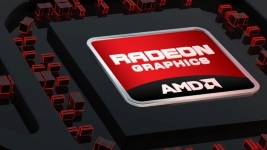The idea was implied in its roadmap but is now becoming official: AMD will unify its ARM and x86 development efforts. “SkyBridge”, as the initiative is known internally, is the most visible part of a plan that will have, by 2015, newly designed processors share the same pin-outs. But according to AMD representatives, the strategy is more global. At the core of it is what they call “ambidextrous computing”, an approach that aims to offer customers a real choice of CPUs for computing but also for ancillary tasks like managing the interconnections of subsystems, communications networks, etc. When it’s time to make structural decisions, platform architects will then be able to choose either technology and thus favor raw compute power or energy efficiency.
For AMD, probably the only global player with the power to pull off this strategy credibly, the benefits are multiple. After acquiring an ARMv8 architectural license from ARM Holdings, the chipmaker will be able to pool its R&D efforts on both counts, and thereby significantly expand its product portfolio without increasing human resources. Eventually, this move may also prove to be a milestone for the HPC community as a whole. As the chart above shows, AMD’s revenues come from today’s growing IT markets (particularly dense servers, embedded systems and professional visualization), which should provide real sustainability to this Intel alternative. For the record, the graph also shows a slowdown in proprietary CPUs, probably real in the case of Sparc and MIPS, perhaps more temporary regarding POWER.
From a product standpoint, these efforts are reflected in the recent release of the “Beema” and “Mullins” APUs, both based on the “Puma” x86 cores. The forthcoming “Puma +” cores with unified memory and HSA (Heterogeneous System Architecture) compatibility will be the first beneficiaries of SkyBridge. 64-bit ARM and x86 versions will be released in both APU and SoC versions, and manufactured using 20nm technology by either GlobalFoundries or TSMC. Last, with the design of its own proprietary ARM core sometime in 2016, AMD should have a sustainable base for future developments.
Commenting on the second chart above, Lisa Su, General Manager of AMD’s Global Business Units, declared that AMD seemed to her to be “the only company that can bridge the two ecosystems.” Jim Keller, Chief Cores Architect, for his part said that “HPC is mostly about high performance feature verification, methodology, CAD and these kinds of things“, adding that “going through the process of designing ARM has given us a bunch of new ideas which I think actually drives better core designs.” Reassuring or exciting depending on whether or not one doubted AMD’s rebound, these announcements are, in any case, likely to reshuffle the cards in a CPU landscape more lively than ever.
© HPC Today 2024 - All rights reserved.
Thank you for reading HPC Today.






























